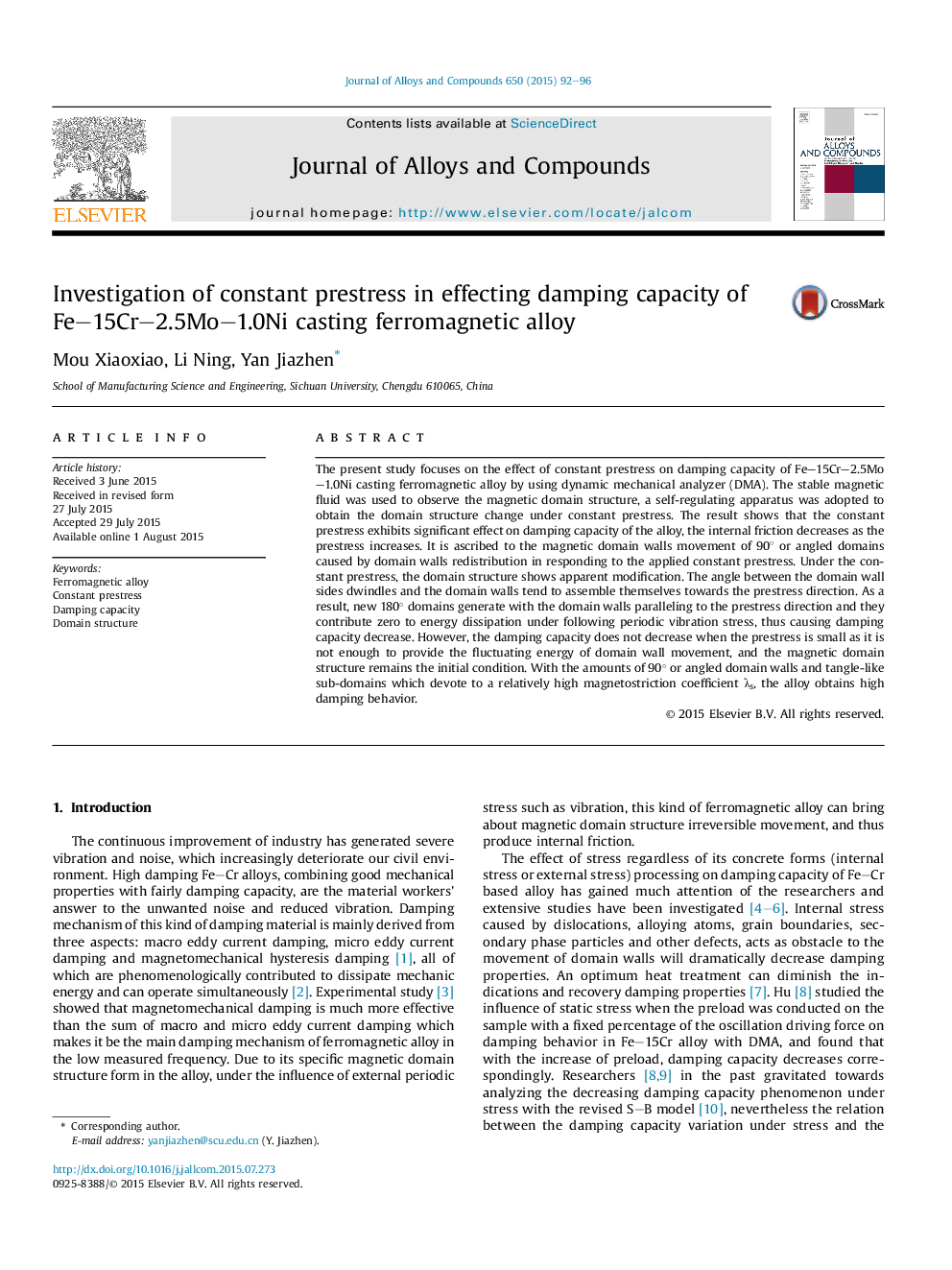| کد مقاله | کد نشریه | سال انتشار | مقاله انگلیسی | نسخه تمام متن |
|---|---|---|---|---|
| 1608140 | 1516243 | 2015 | 5 صفحه PDF | دانلود رایگان |

• The prestress loaded keeps constant in consideration of its more engineering relevance.
• Damping capacity decreases as constant prestress increases.
• Magnetic domain structure modification in-situ observation is used to analysis.
• A tentative domain walls movement manner is discussed.
• Domain walls tend to assemble themselves in the direction of constant prestress.
The present study focuses on the effect of constant prestress on damping capacity of Fe–15Cr–2.5Mo–1.0Ni casting ferromagnetic alloy by using dynamic mechanical analyzer (DMA). The stable magnetic fluid was used to observe the magnetic domain structure, a self-regulating apparatus was adopted to obtain the domain structure change under constant prestress. The result shows that the constant prestress exhibits significant effect on damping capacity of the alloy, the internal friction decreases as the prestress increases. It is ascribed to the magnetic domain walls movement of 90° or angled domains caused by domain walls redistribution in responding to the applied constant prestress. Under the constant prestress, the domain structure shows apparent modification. The angle between the domain wall sides dwindles and the domain walls tend to assemble themselves towards the prestress direction. As a result, new 180° domains generate with the domain walls paralleling to the prestress direction and they contribute zero to energy dissipation under following periodic vibration stress, thus causing damping capacity decrease. However, the damping capacity does not decrease when the prestress is small as it is not enough to provide the fluctuating energy of domain wall movement, and the magnetic domain structure remains the initial condition. With the amounts of 90° or angled domain walls and tangle-like sub-domains which devote to a relatively high magnetostriction coefficient λs, the alloy obtains high damping behavior.
Figure optionsDownload as PowerPoint slide
Journal: Journal of Alloys and Compounds - Volume 650, 25 November 2015, Pages 92–96